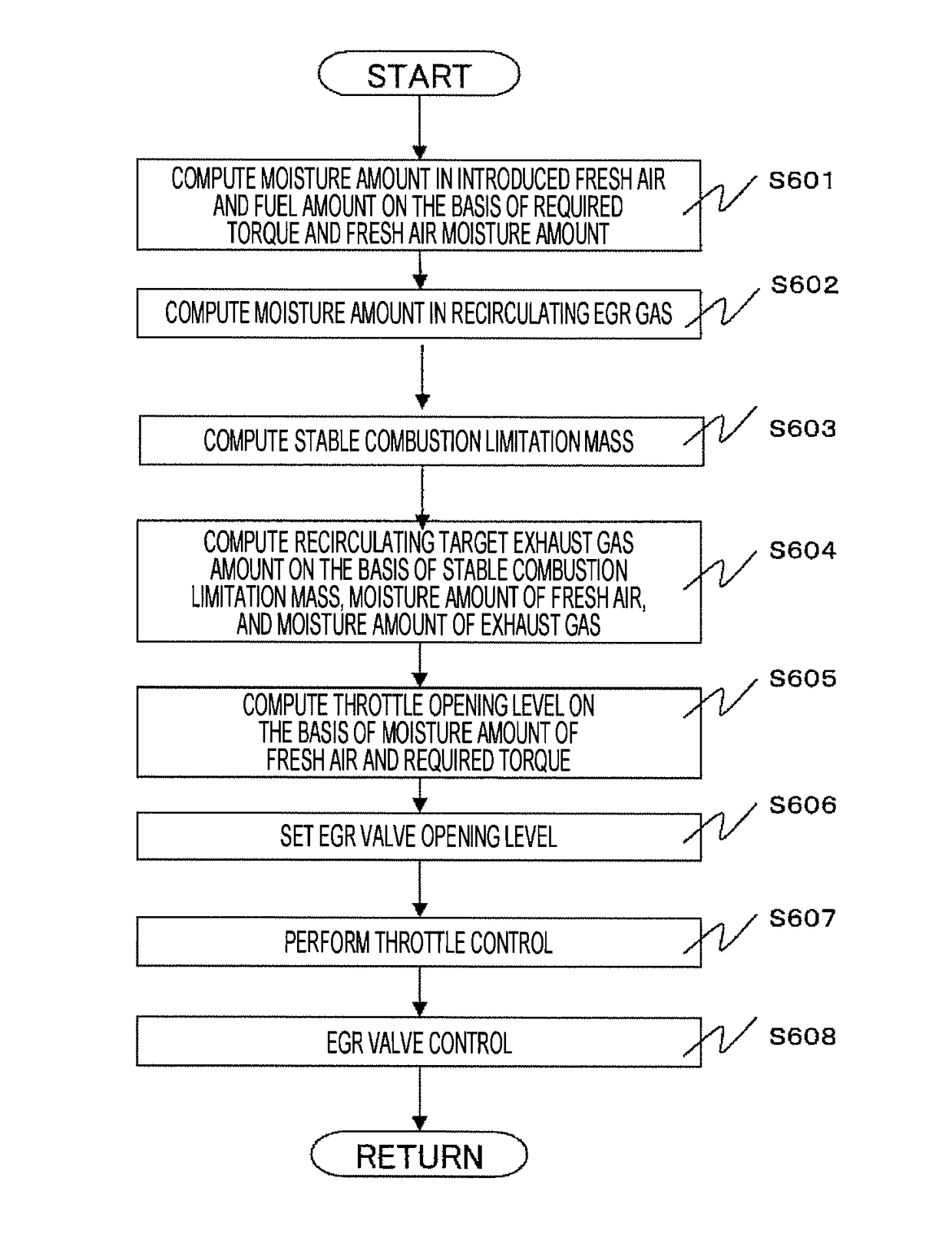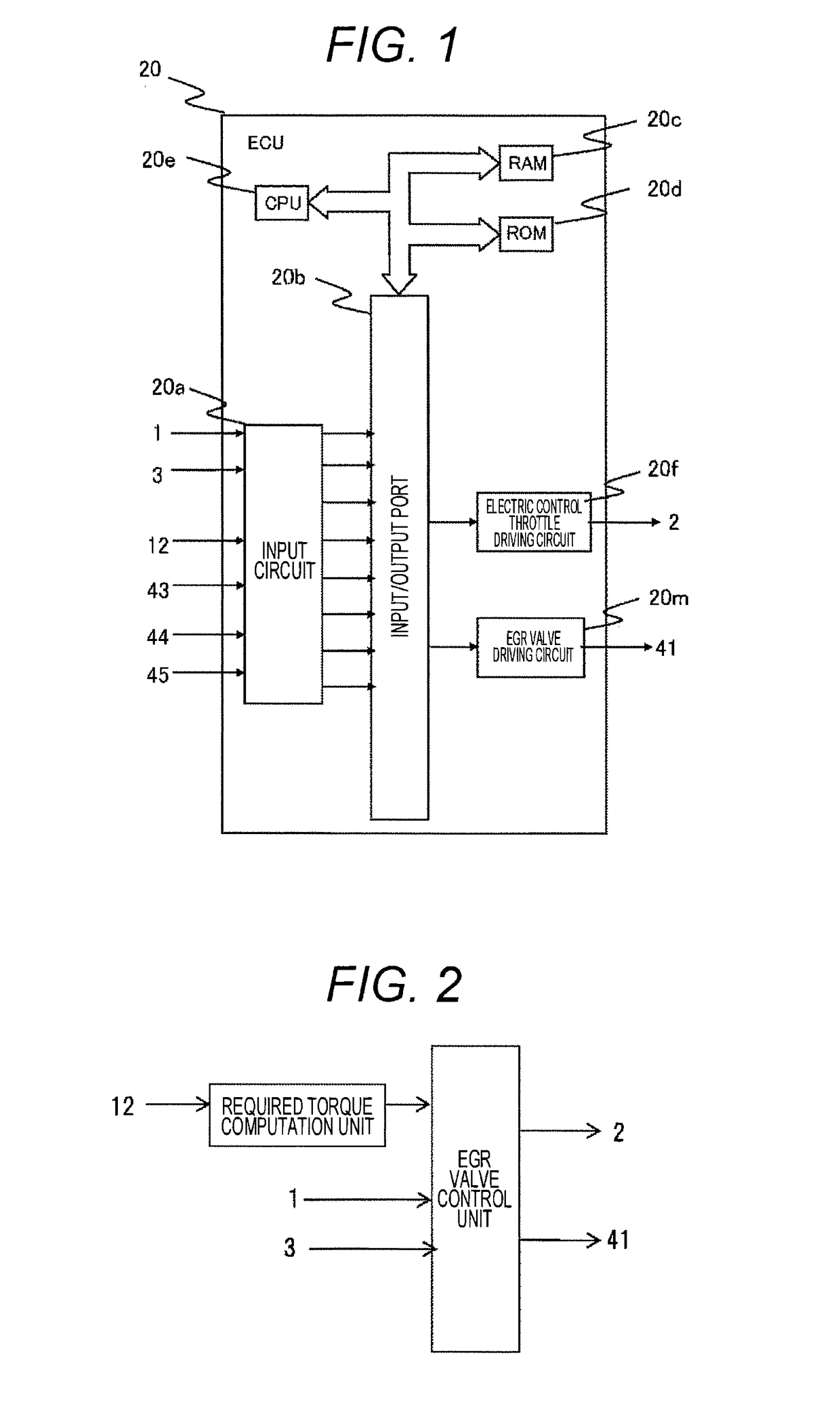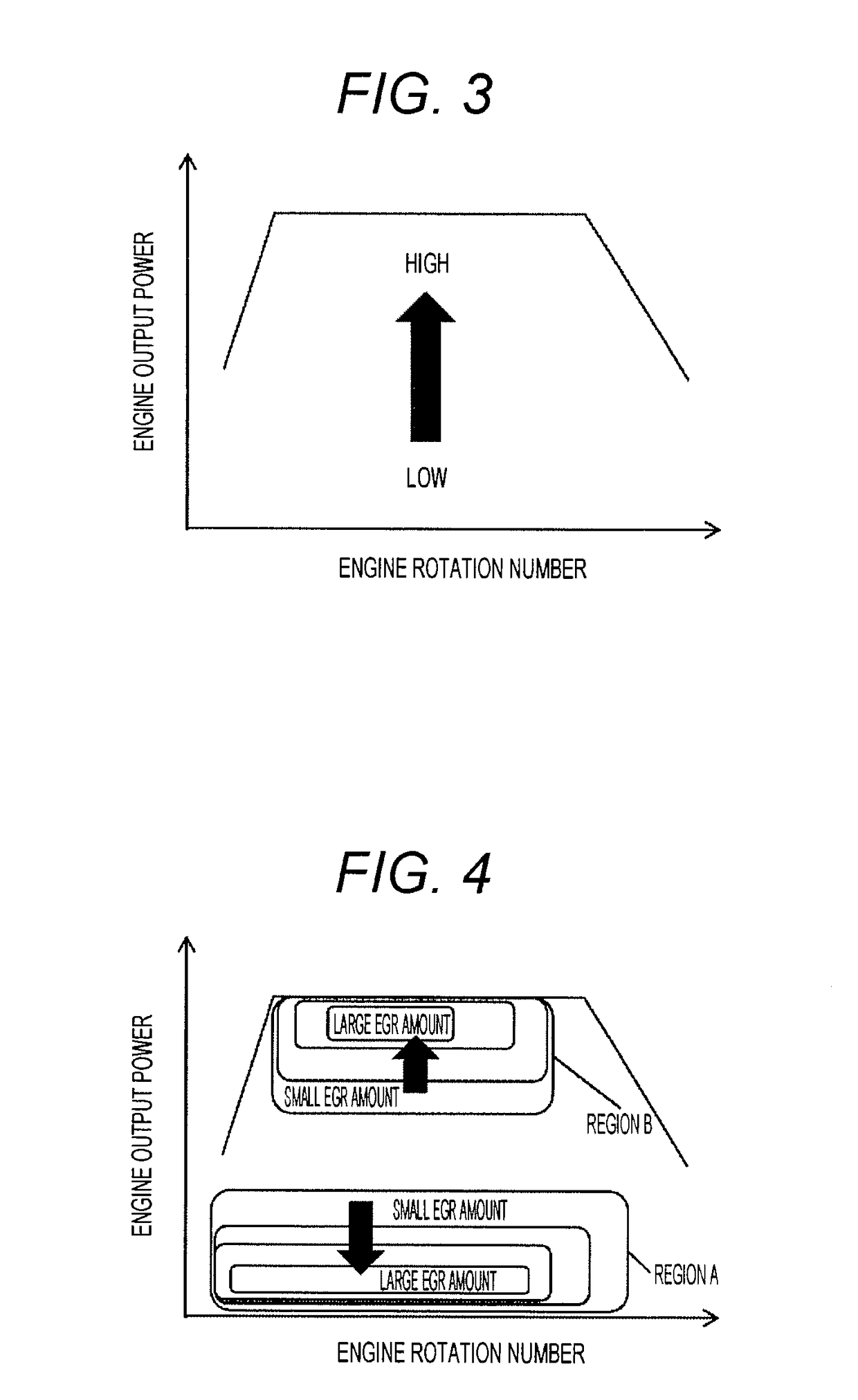Control device for internal combustion engine
- Summary
- Abstract
- Description
- Claims
- Application Information
AI Technical Summary
Benefits of technology
Problems solved by technology
Method used
Image
Examples
example 1
[0041]Example 1 will now be described. FIG. 5 is a schematic system diagram illustrating an automobile in-cylinder injection type gasoline engine provided with a low-pressure EGR flow passage.
[0042]The engine 100 is an automobile gasoline engine that performs spark ignition type combustion. An air flow sensor 1 that measures an intake air amount, a humidity sensor 3 that detects an intake humidity, a supercharger compressor 4a for supercharging the intake air, an intercooler 7 for cooling the intake air, and an electronic control throttle 2 that adjusts the intake pipe pressure are provided in respective suitable positions of the intake pipe. Here, the humidity sensor 3 is a sensor capable of detecting a relative humidity and an absolute humidity. In addition, each cylinder of the engine 100 is provided with a fuel injection device (hereinafter, referred to as an “injector”) 13 that injects fuel to the inside of the cylinder 14 and an ignition plug 16 that supplies ignition energy. ...
example 2
[0083]Next, Example 2 will be described. FIG. 5 illustrates the engine configuration, and FIG. 2 illustrates the ECU configuration. FIG. 10 illustrates a computation process performed by the EGR valve control unit of FIG. 2. Example 2 is similar to Example 1 except for the process of step S1004. When the target exhaust gas amount is set in step S1004, the catalyst temperature is estimated depending on an increase of the coolant temperature measured using the coolant temperature sensor or the time from the engine start. In addition, the target exhaust gas amount is set depending on the estimated catalyst activation state. In the low-pressure EGR system, the exhaust gas prior to activation of the catalyst contains a lot of active chemical species contributing to the combustion stability, such as carbon monoxide (CO) or nitrogen monoxide (NO), compared to the catalyst warm-up steady state. In the steady state posterior to the warm-up, such active chemical species are converted into sta...
example 3
[0086]Next, Example 3 will be described. With regard to Example 3, FIG. 12 illustrates a configuration of the engine, and FIG. 13 illustrates a computation process performed by the EGR valve control unit of FIG. 2. The configuration of the engine of FIG. 12 is similar to that of FIG. 5 except for the exhaust gas recirculation mechanism. In the configuration of FIG. 12, the exhaust gas is extracted from the upstream side of the turbine of the turbocharger and is recirculated to the downstream side of the compressor. The computation process of FIG. 13 is similar to that of Example 1 of FIG. 6 except for step S1304. In step S1304, when the target exhaust gas amount is set, the coolant temperature measured using the coolant temperature sensor or the target exhaust gas amount depending on the detected EGR gas temperature are set. While the coolant temperature is low, the EGR gas temperature is lowered. If the temperature decreases, unstable combustion easily occurs. Therefore, compared t...
PUM
 Login to View More
Login to View More Abstract
Description
Claims
Application Information
 Login to View More
Login to View More - R&D
- Intellectual Property
- Life Sciences
- Materials
- Tech Scout
- Unparalleled Data Quality
- Higher Quality Content
- 60% Fewer Hallucinations
Browse by: Latest US Patents, China's latest patents, Technical Efficacy Thesaurus, Application Domain, Technology Topic, Popular Technical Reports.
© 2025 PatSnap. All rights reserved.Legal|Privacy policy|Modern Slavery Act Transparency Statement|Sitemap|About US| Contact US: help@patsnap.com



